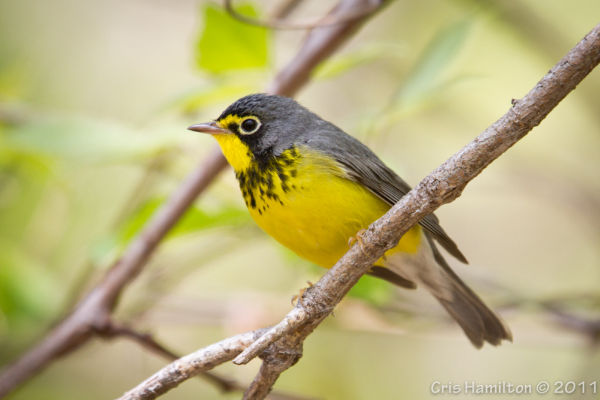
Yesterday morning I stopped in Schenley Park on my way to work even though it looked like the rain would resume at any minute.
The thick, low clouds were ominous. Nonetheless, as soon as I stepped out of my car I heard a Tennessee warbler high in the oak next to me. I rarely see this warbler in western Pennsylvania so I worked to find him.
This took a long time. The Tennessee warbler is gray-green and smaller than oak leaves. My particular warbler was not moving much.
Five minutes later and now across the street for a better view I was still looking for him when it started to rain.
Forget the umbrella! I saw him move lower. Eventually he perched in an open bush at eye level, still singing. Success!
And now there were many warblers at eye level. On the hillside behind the Visitors Center I saw a second Tennessee warbler and heard, “Chip chupety swee-ditchety.”
A beautiful Canada warbler with a bright yellow belly and black necklace sang in an opening below me. He moved slowly and let me see him from all angles. What a nice reward after my long search for the camouflage bird.
In the end the rain helped me find them. This flock of migrants had been waylaid by the weather and when the rain forced the insects beneath the leaves, the warblers followed.
This morning it’s raining again. The Post-Gazette says it will rain until July. (!)
I wonder if I’ll find wet visitors in the park today.
(photo of a Canada warbler by Cris Hamilton)
Nice bird! The Canada, I mean. I hear Tennessee’s are abundant this year in our area, but I haven’t seen one yet. Not that I’ve been out much, with all this rain. Best bird for me lately was, ironically, a Red-breasted Nuthatch at Presque Isle last weekend. May have to get up there again this Saturday. Hope it’s not past time to get a good diversity of warblers up there.
Nice mnemonic on the Canada call, too, btw.
The mnemonic is from the Petersen Guide to Birds of Eastern North America, attributed to Dr. William W. H. Gunn.
p.s. I did find wet visitors in the park today: many, many Tennessee warblers, some Chestnut-sided warblers and — heard but not seen — Blackpoll warblers. And now it’s thundering.